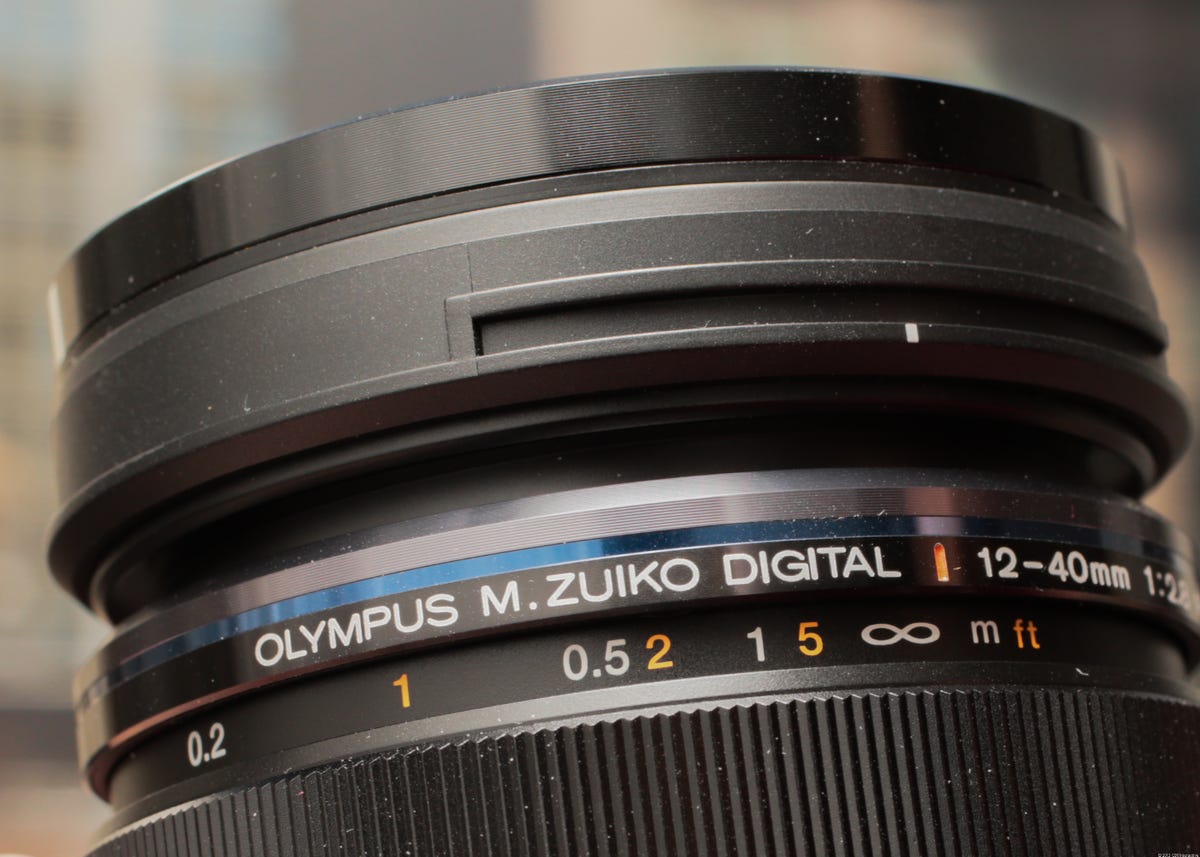
Faster, longer, better...
But not cheaper.
There's a reason the lens which ships with many entry-level interchangeable-lens cameras -- usually an 18-55mm (APS-C) or 14-42mm (Micro Four Thirds) -- adds a mere $100 to the cost of the kit. It allows manufacturers to offer the most inexpensively priced option possible while still delivering a decent out-of-the-box, point-and-shoot-like experience. But while most kit lenses are decent, their narrow aperture ranges can be both creatively stifling and inflexible for shooting in low light, the latter environment where most inexpensive cameras need the most help. Still, there's something to be said for the convenience of a multipurpose zoom lens.
Primes can be frustrating at times: when you're physically stuck working a fixed distance from your subject or traveling with folks who don't want to humor your attempts to get the right shot, to name just two (Here are my prime lens recommendations as well as a guide to understanding lenses.). But stepping up to a slightly better lens can improve your photography noticeably.
The latest kit-lens trend has been power-zoom lenses. These are great for convenience and portability, so from that perspective they're better than the traditional versions. But they're still generally not great optically.
I've kept my recommendations to less than $900 and targeted for non-full-frame cameras. While some of these lenses are designed for full-frame cameras -- they tend to be better lenses in general -- I figure if you've bought a full-frame camera you should be able to figure a lot of this out by yourself. Some of them are quite old. Newer lenses tend to be more compact, with better coatings and better optical stabilization (where applicable), but older models still provide good value for the money.
Also, while some of my recommendations have the same aperture range as most kits -- f3.5-5.6 -- they all have much longer ranges so that they offer about a stop wider aperture across most of the range.
There are also some lenses I'd love to recommend, such as the Olympus MFT 12-40mm f2.8 and Sony E-mount 16-70mm F4 ZA OSS, but they're both too expensive at almost $1,000.
Multi-mount Sigma 18-35mm f1.8 DC HSM
Currently available for Canon EF-S and Nikon DX mounts, this $800 lens doesn't have a big zoom range -- 27-53mm-equivalent -- but it makes up for it in fast aperture and great build quality. If you like to shoot landscapes and some close portraits, this is a must-have lens. Its one big drawback: no image stabilization.
Multi-mount Sigma 17-70mm f2.8-4 DC Macro HSM OS
With Canon EF-S, Nikon DX, Sony A- and Pentax K-mount options, this $500 lens provides a relatively cheap, one-stop-faster alternative to an 18-55mm kit. It delivers a 27-112mm-equivalent focal range on Canon and 26-105mm on the others; also, there's sensibly no optical stabilization on the Sony and Pentax versions because their cameras use sensor-shift stabilization.
Multi-mount Tamron SP 17-50mm f2.8 XR Di II VC
With options for Canon EF-S and Nikon DX mounts, this $650 not only offers a fast, constant f2.8 aperture over its 26-75mm (Nikon)/28-80mm (Canon)-equivalent range, but it also offers optical image stabilization, which practically no lenses this wide offer.
Canon EF-S 17-55 f/2.8 IS USM
Though it's on the expensive side at about $880 and bigger than a compact-ish kit lens, this fast, image-stabilized general-purpose lens is a far better alternative -- as long as you don't need close focusing.
Fujifilm Fujinon XF18-55mmF2.8-4 R LM OIS
Nikon FX AF-S Nikkor 24-85mm f3.5-4.5G ED VR
For about $500, this full-frame lens offers an effective 36-128mm focal range on a DX camera, with a faster aperture across the entire range than the typical 18-55mm kit. It's bigger, but still pretty compact.
Nikon DX Nikkor 18-200mm f/3.5-5.6G ED VR II
This lens from Nikon is a great alternative for folks who want a more flexible all-in-one range for about $600.
Panasonic MFT Lumix G X Vario PZ 45-175mm f4-5.6 Asph OIS
There really are a dearth of fast zoom alternatives for Micro Four Thirds. Olympus makes some great primes, but its older zooms are meh, and both Olympus and Panasonic's fast lenses are $1,000 or more. This is a pretty good power zoom option for telephoto fans with an extended focal range of 90-350mm equivalent for a reasonable $500.
Pentax smc DA 18-135mm f3.5-5.6 ED AL DC WR
Pentax's $500 all-in-one general-purpose lens offers more flexibility than the 18-55mm with its effective focal range of 27-203mm.
Sony A mount 16-50mm f2.8 SAL1650
Technically, this is a a kit lens, but for Sony's higher-end SLT cameras. However, it's a really nice kit lens, with a fast, constant maximum aperture and great build quality. It's not cheap at about $800, and covers a wider-angle range than the typical 18-55mm -- it provides an effective focal range of 24-75mm -- but that's a great range for group shots, portraits, and landscapes. If you want to spend a little less, Sigma offers a 17-70mm (26-105mm equivalent) for about $450 for A-mount.
Sony A-mount 28-75mm f2.8 SAM SAL 2875
An older lens, if the 16-50mm f2.8 is too wide angle for you, this 42-113mm-equivalent is the longer alternative. Unfortunately, it's pretty pricey at about $900.
Sony FE 28-70mm F3.5-5.6 OSS
This new lens was developed as the kit lens for Sony's A series of full-frame E-mount cameras. I'm not crazy about it as a full-frame lens, but as a better-than-kit model for the APS-C versions, I think it's very nice. Though it's bigger than a typical E-mount lens, for about $500 you get an effective focal range of 42-105mm for the same aperture values.


